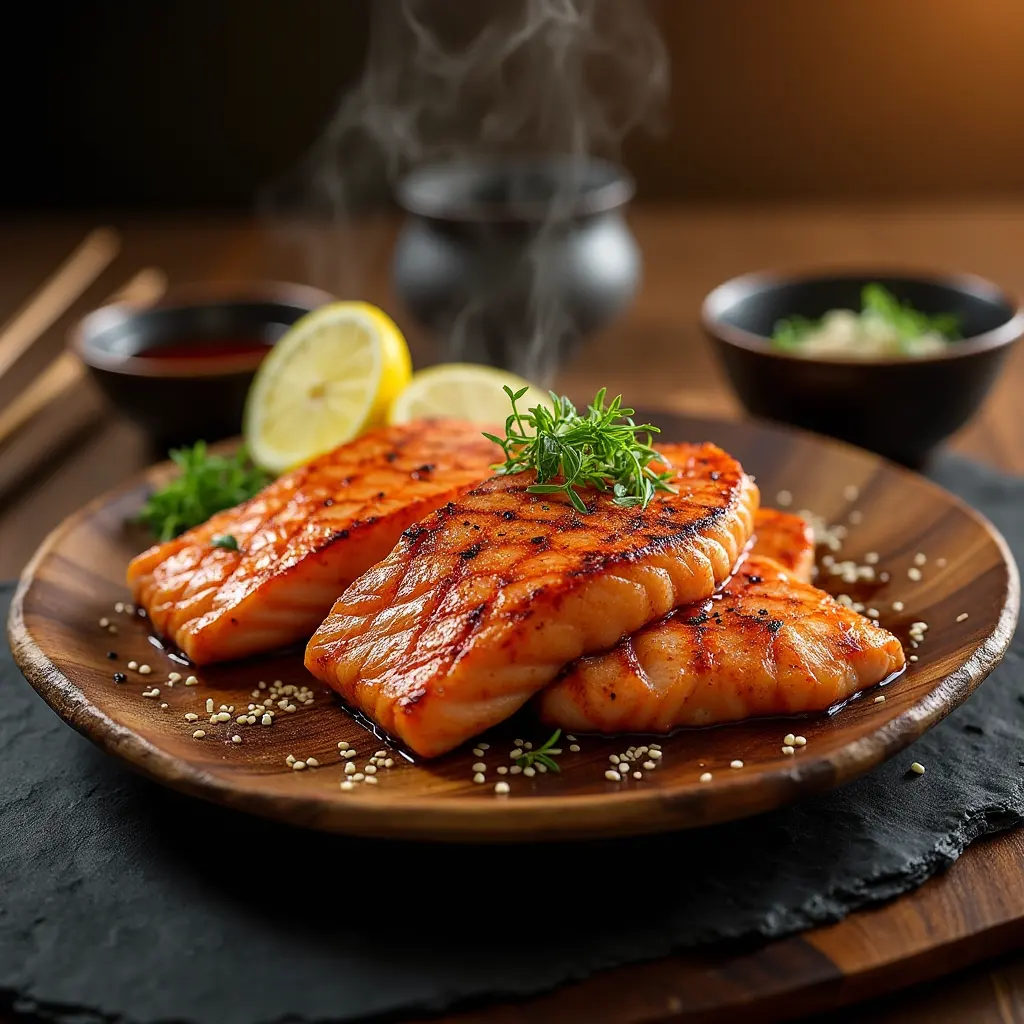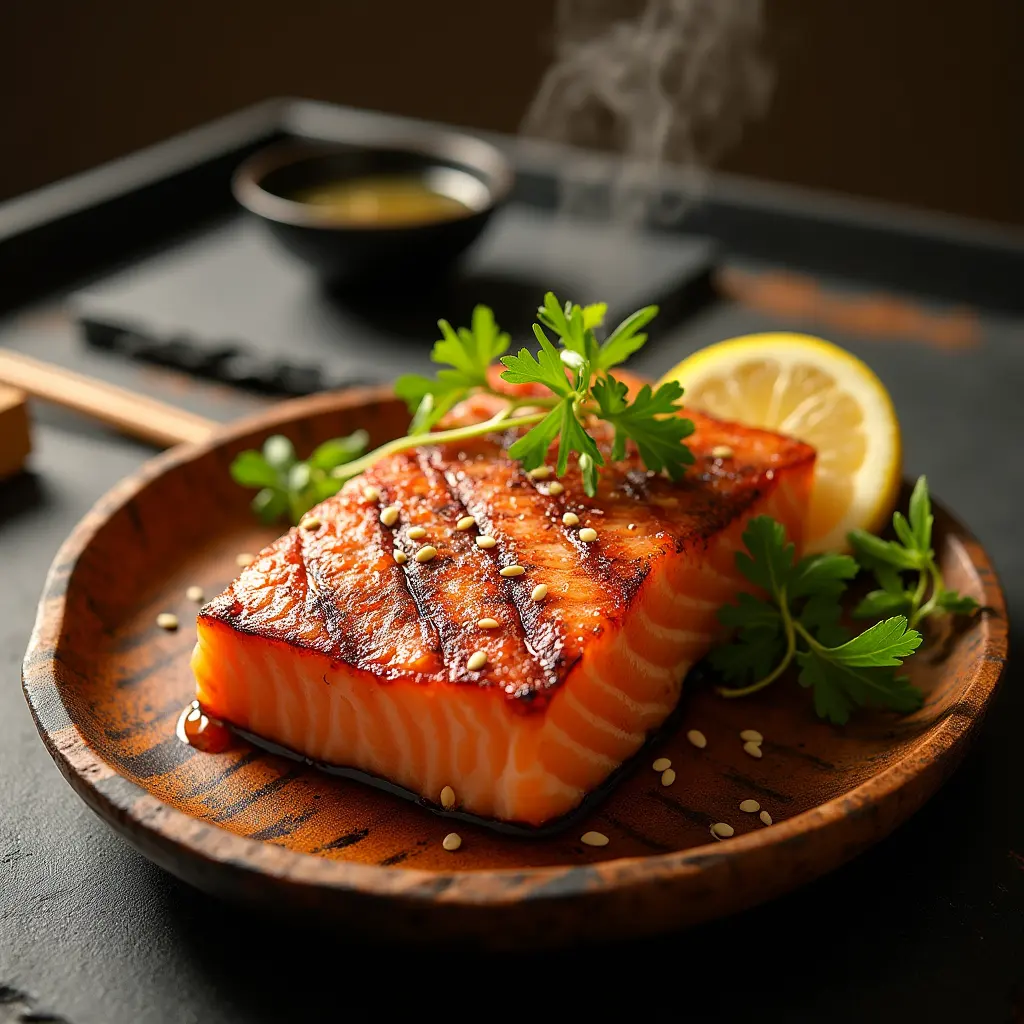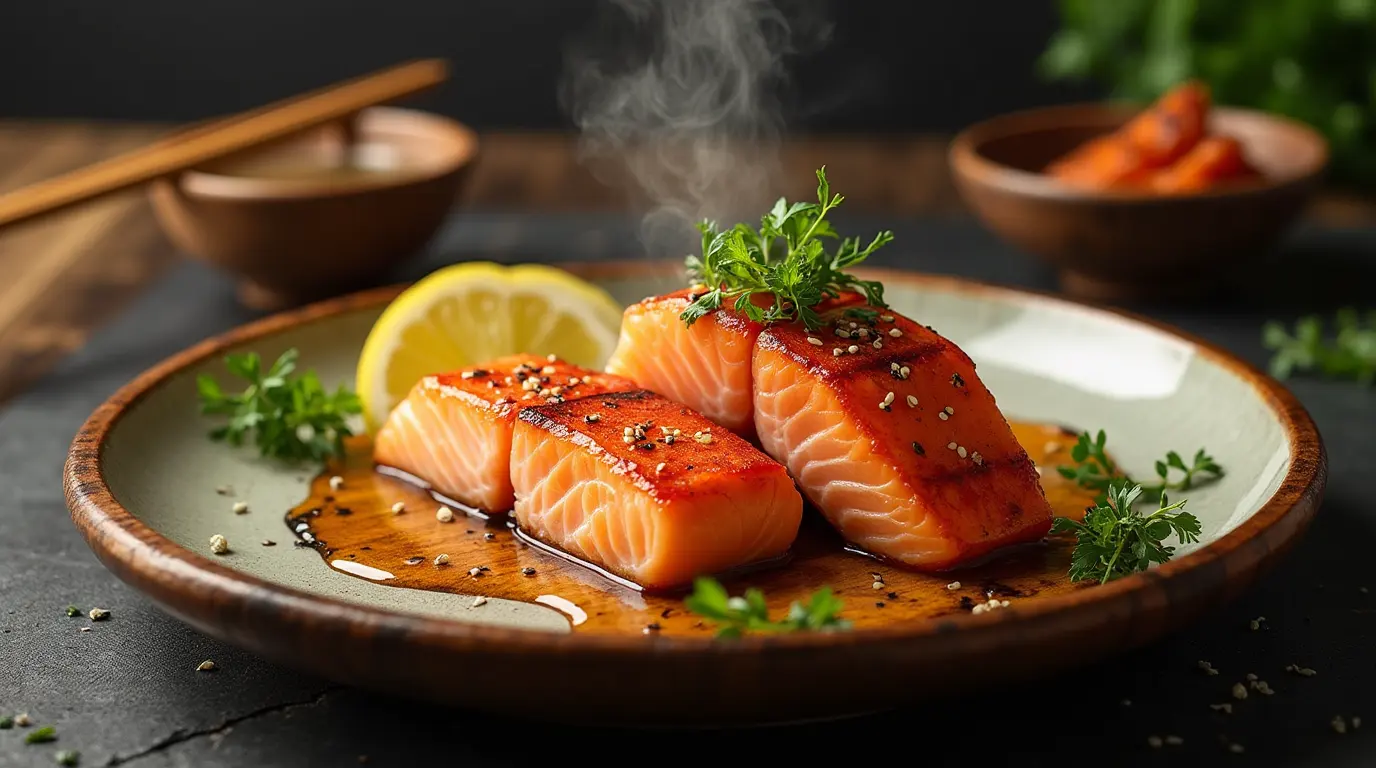If you’ve ever dined at a Japanese izakaya, you may have come across a delicious yet underrated dish—salmon kama. This tender, fatty, and incredibly flavorful cut is the salmon collar, a part of the fish packed with rich umami taste and juicy meat. Despite its incredible flavor, salmon kama remains one of the most overlooked seafood cuts.
The good news? You don’t have to visit a high-end sushi restaurant to enjoy it. You can prepare this delicacy at home with just a few simple ingredients and cooking techniques. Whether you prefer it grilled, baked, or pan-seared, this guide will walk you through everything you need to know about making the perfect salmon kama right in your own kitchen.
What is Salmon Kama?
Salmon kama refers to the collar portion of the fish, located just behind the gills. It’s one of the most succulent parts, boasting a high-fat content that results in a buttery texture when cooked. Many seafood lovers compare its taste and texture to salmon belly, but kama is meatier with a crispier skin when grilled.
Why is Salmon Kama Special?
- Tender, fatty, and packed with umami flavor
- Budget-friendly alternative to salmon fillets
- Minimal preparation needed for a gourmet-quality dish
- Rich in Omega-3 fatty acids, supporting heart and brain health
Why You Should Try Cooking Salmon Kama at Home
Health Benefits
- High in Omega-3s – Supports heart health and reduces inflammation.
- Rich in Protein – A great source of lean, healthy protein.
- Loaded with Essential Nutrients – Contains B vitamins, selenium, and potassium.
Cost-Effective and Sustainable
- Often discarded or sold cheaply, making it a budget-friendly seafood choice.
- Using this part of the fish reduces food waste, supporting sustainable seafood consumption.
Easy to Cook


- Requires minimal seasoning—salt and lemon are often enough.
- Quick cooking time, ready in less than 20 minutes.
- Adaptable to multiple cooking methods: grilling, baking, and pan-searing.
Ingredients for Salmon Kama Recipe
| Ingredient | Quantity | Notes |
|---|---|---|
| Salmon Kama (Salmon Collar) | 2 pieces | Fresh or frozen |
| Soy Sauce | 2 tbsp | Adds umami flavor |
| Sake | 2 tbsp | Enhances tenderness |
| Mirin | 1 tbsp | Adds mild sweetness |
| Lemon Wedges | 2-3 slices | For serving |
| Salt | 1 tsp | To season |
| Black Pepper | ½ tsp | Optional |
| Grated Daikon (Radish) | 2 tbsp | Traditional Japanese garnish |
How to Prepare Salmon Kama
Step 1: Preparing the Salmon Kama
- Rinse the salmon kama under cold water and pat dry with a paper towel.
- Lightly season with salt and let it sit for 10–15 minutes to draw out moisture.
- Optional: Marinate in a mix of soy sauce, sake, and mirin for a deeper flavor.
Step 2: Cooking Methods
Option 1: Grilling (Best Method)
- Preheat the grill to medium-high heat.
- Place salmon kama skin-side down and grill for 4-5 minutes per side.
- Flip carefully and cook until the skin is crispy and golden brown.
- Squeeze fresh lemon juice over the top before serving.
Option 2: Oven-Baked (Alternative Method)
- Preheat the oven to 425°F (220°C).
- Line a baking sheet with parchment paper and place the salmon collar on it.
- Bake for 15-20 minutes, turning once for even cooking.
- Finish with a broil setting for 2 minutes to crisp up the skin.
Option 3: Pan-Seared (Quick Method)
- Heat a pan over medium heat with a small amount of oil.
- Sear each side for 4-5 minutes until the skin turns crispy.
- Serve immediately with daikon radish and ponzu sauce.
Serving Suggestions: What to Eat with Salmon Kama
Traditional Japanese Pairings
- Grated Daikon & Ponzu Sauce – Enhances the umami flavor.
- Steamed White Rice – Absorbs the rich juices.
Side Dishes
- Miso Soup – A warm and comforting addition.
- Japanese Pickles – Adds crunch and acidity.
- Edamame – A simple and nutritious side.
Beverage Pairings
- Green Tea – Cleanses the palate.
- Sake or Light Beer – Complements the fatty texture.
Pro Tips for the Best Salmon Kama
Use wild-caught salmon for a better texture and richer taste. Don’t overcook – Aim for a crispy skin with a juicy interior. Marinate overnight for enhanced flavor. Cook at high heat to get the best crispy texture.
Frequently Asked Questions (FAQ)
What is salmon kama best cooked with?
Salmon kama pairs best with simple seasonings like salt and soy sauce. For a more complex flavor, try adding miso glaze or teriyaki sauce.
Can I cook salmon kama in an air fryer?
Yes! Cook at 400°F (200°C) for 10-12 minutes, flipping halfway through for even crispiness.
Where can I buy salmon kama?
You can find salmon kama at Japanese grocery stores, seafood markets, and online retailers.
Is salmon kama healthy?
Absolutely! It’s rich in Omega-3s, protein, and essential vitamins, making it a nutritious seafood option.
Key Food Safety Considerations
- Storage:
Keep salmon (including salmon kama) refrigerated at 40°F (4°C) or below to slow bacterial growth. If you’re not planning to cook it immediately, freezing it is advisable. - Handling:
Always wash your hands, utensils, and surfaces thoroughly after handling raw fish to avoid cross‑contamination with other foods. Even though FSIS focuses on other proteins, the same rigorous hygiene practices apply to seafood. - Cooking:
For maximum safety, cook salmon to an internal temperature of at least 145°F (63°C). This temperature is sufficient to kill harmful bacteria and parasites that might be present. If you enjoy dishes where salmon kama is only lightly seared or even served raw (as in sushi or sashimi), ensure that the product comes from a reputable source and has been properly frozen to eliminate parasite risks. - Visual and Sensory Inspection:
Fresh salmon should have bright, vibrant flesh with a mild, clean scent. If you notice any off odors, discoloration, or slimy texture, it’s a sign that the fish may have begun to spoil.
(General food safety advice consistent with guidelines from FSIS and CDC.) - For more detailed information, you can visit the FSIS Food Safety page and the CDC Food Safety section.
Conclusion
Now that you know how to prepare salmon kama, you can bring this hidden gem to your home kitchen. Whether you choose to grill, bake, or pan-sear, you’ll be amazed at the rich flavors and buttery texture of this Japanese delicacy.
So, why not give it a try? Head to your local seafood market, grab some salmon collars, and enjoy a restaurant-quality dish right at home. If you loved this recipe, share it with your friends and explore more delicious seafood recipes!

